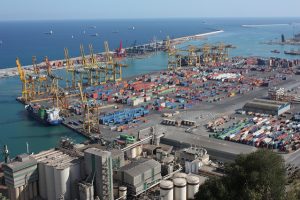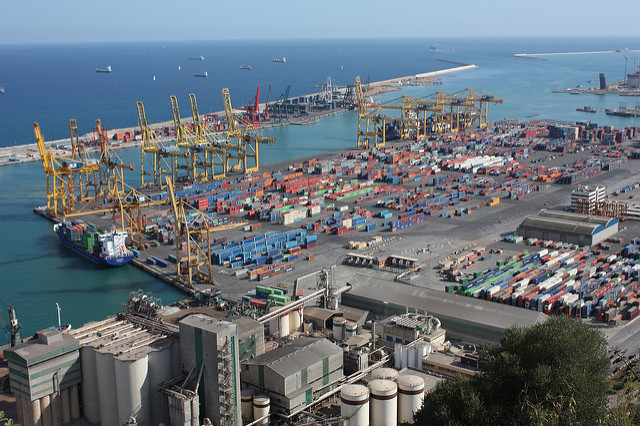 Even as 2016 witnessed the container shipping industry hitting bottom, it may also be seen as the year the sector finally began to seriously face the challenges and issues besetting the industry, igniting hopes it can start wiggling out of the tight situation it is in.
Even as 2016 witnessed the container shipping industry hitting bottom, it may also be seen as the year the sector finally began to seriously face the challenges and issues besetting the industry, igniting hopes it can start wiggling out of the tight situation it is in.
“The container shipping sector has spent much of the post-financial crisis era under severe pressure and, as many expected, 2016 proved no real exception,” said Clarksons in a new analysis. “Box freight rates in general remained weak, and the SCFI Composite Index averaged 18% lower in 2016 than in 2015. However, by late in the year it did appear that spot freight rates might be bottoming out on some trade lanes.”
Sector fundamentals appeared a little more positive in 2016, the research and consultancy firm added. Demand conditions improved, with global volumes expanding by an estimated 3% in the full year to 181 million TEUs. Volumes on the key Far East-Europe trade returned to positive growth and the rate of expansion on intra-Asian trades accelerated back to more robust levels. However North-South volumes and trade into the Middle East remained under severe pressure from the impact of diminished commodity prices, though volumes into the Indian Sub-Continent grew strongly.
At the same time, containership capacity growth slowed significantly in 2016, reaching just 1.2% in the full year. Deliveries fell dramatically to 0.9 million TEUs from 1.7 million TEUs in 2015 and demolition accelerated rapidly to a new record of 0.7 million TEUs.
However, given the surplus built up in the post-Lehman years, particularly the impact of the delivery of new “mega ships,” Clarksons said the improved supply-demand balance seen last year was not enough to significantly improve market conditions. At the end of 2016, around 7% of total fleet capacity stood idle. The financial collapse of major Korean operator Hanjin further illustrated the acute distress facing both operators and owners.
“So, further recalibration still appears to be necessary to generate better markets. However, 2016 might also be seen as the year in which the sector finally started to lay real foundations for a better future. Demolition hit a new record, and financial distress and regulatory requirements are expected to drive further recycling. The ordering of newbuild capacity dropped to just 0.2m TEU in 2016, a dramatic halt,” said Clarksons.
Meanwhile, further significant steps in the consolidation of the sector were taken through mergers and acquisitions (M&As) involving major operators; the top 10 now deploy 70% of all boxship capacity, a figure set to rise to around 80%.
“Building blocks only these factors may be, but many will hope that at last container shipping is starting to build towards something more positive than the gloomy conditions that perpetuated in 2016,” stated Clarksons.
Only 17 big-time carriers now
Alphaliner in a separate report also noted how M&A activities have led to only 17 large-scale international carriers remaining as at January 2017, down from 20 a year ago. The reduction follows the acquisition of APL by CMA CGM, integration of CSCL within COSCO, and abrupt exit of Hanjin Shipping in September 2016.
It forecasts this number to shrink further in 2017 with the pending conclusion of the Hapag-Lloyd and UASC merger, the acquisition of Hamburg Sud by Maersk and the merger of K Line, MOL, and NYK’s liner shipping businesses.
The overall capacity operated by the 17 main carriers shrank by 1.3% over the last 12 months, after taking into account the removal of Hanjin’s tonnage. Collectively, these carriers control 81.2% of the global liner capacity as at January 1, 2017, compared to 83.7% controlled by the 20 main carriers a year ago.
Apart from Hanjin Shipping, five other carriers logged capacity reductions, with Zim recording the largest loss as its operated capacity shrank by 14.8%. MOL and K Line also recorded significant capacity reductions of 10.6% and 7.7%, respectively, ahead of the planned merger with NYK to form the J-3 partnership. Although CMA CGM Group’s operated capacity grew by 17.3% thanks to the APL purchase, the aggregated capacity of both carriers fell by 9.3%, due mainly to the outsourcing of a substantial part of CMA CGM’s feedering activities. Hamburg Sud was also forced to rationalize its operated capacity due to the very weak trading conditions on its core South America routes. The carrier’s operated fleet shrank by 6.6% last year, said Alphaliner.
Photo: David Davies





